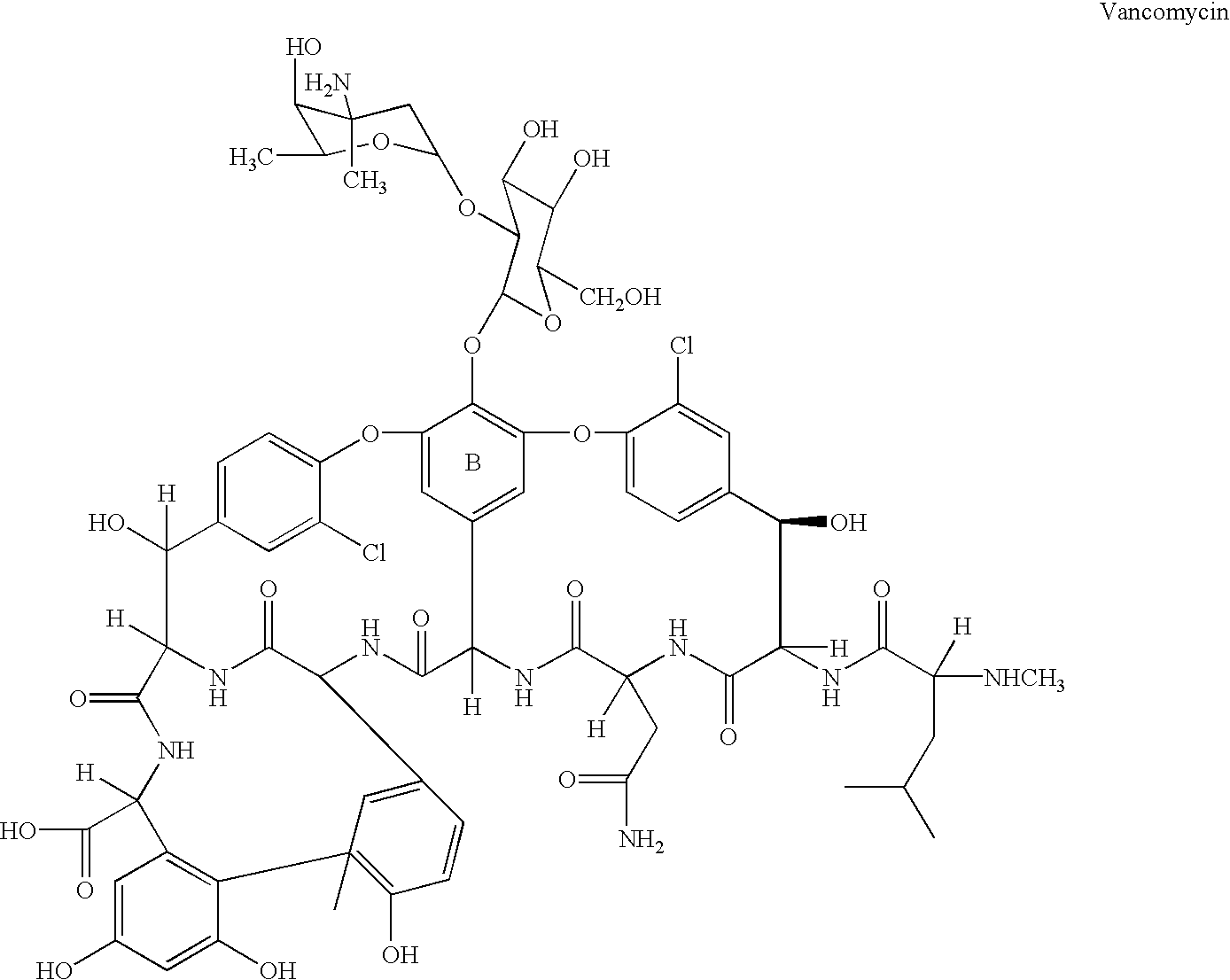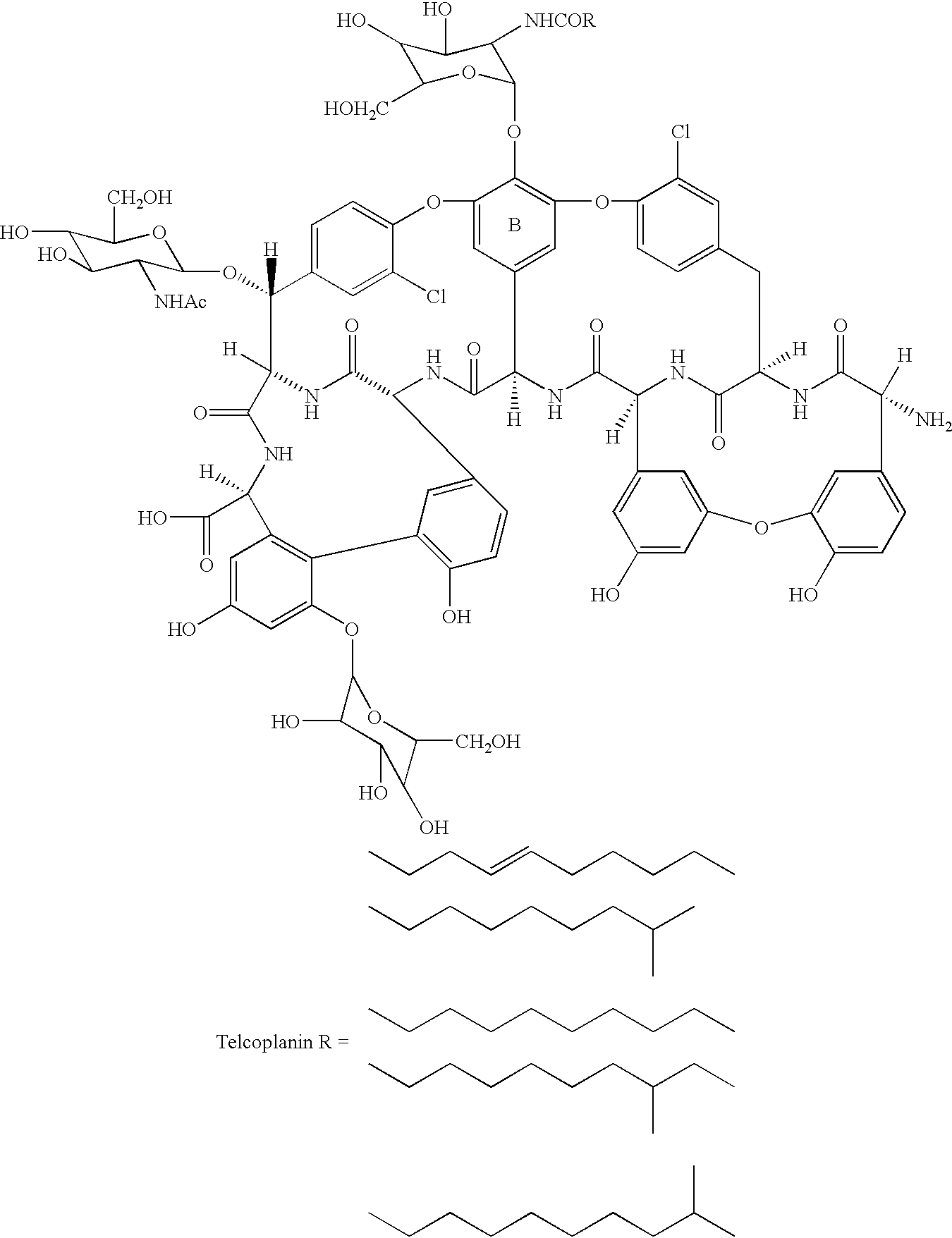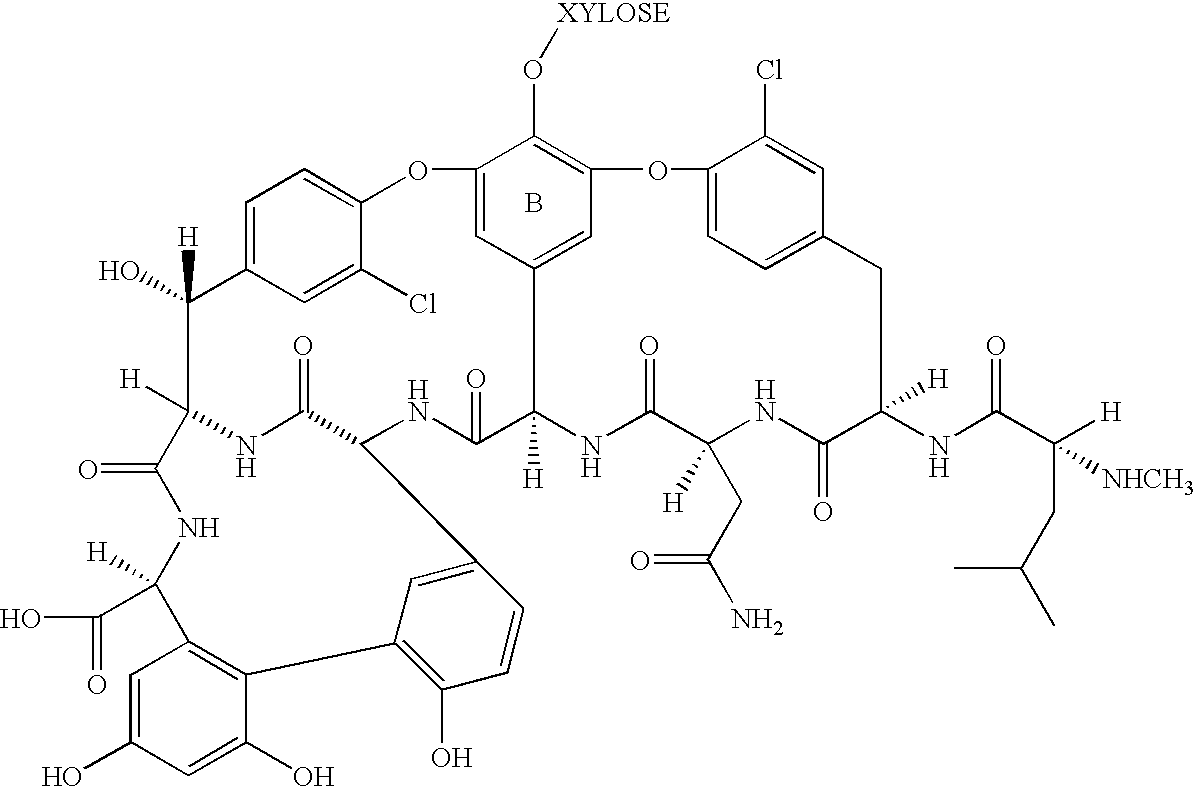Glycosyltransferase gene gtfE from amycolatopsis oreintalis
a technology of glycosylation and amycolatopsis, which is applied in the direction of transferases, enzymology, food preparation, etc., can solve the problems of difficult if not impossible, limited research into glycosylation of glycopeptides and glycopeptide cores, and inability to achieve molecular rearrangement and substitution of sugars on glycopeptide compounds by chemical means
- Summary
- Abstract
- Description
- Claims
- Application Information
AI Technical Summary
Problems solved by technology
Method used
Image
Examples
example 2
Construction of a DNA Vector Containing gtfEp Gene
[0092] A gtfEp gene cassette may be conveniently made by any suitable site-directed mutagenesis procedure. A suitable commercially available kit, "MORPH," utilizes a DpnI hemimethylation procedure (available from 5 Prime 3 Prime, Inc. Boulder, Colo. 80303).
[0093] Briefly, a plasmid carrying the wild-type sequence, gtfE, is prepared from any dam.sup.+ E.coli, such as DH5.alpha., HB101, RR1, and JM101. The purified target DNA is then denatured at 100.degree. C. and annealed to an oligonucleotide which carries the desired mutation. In this case, a "T" is inserted in place of a "C" at position 1003 of SEQ ID NO.1. The oligonucleotide is extended with T4 DNA polymerase to generate hemi-methylated, double-stranded DNA molecules resistant to digestion by DpnI endonuclease. Following transformation into a mutS bacterial strain colonies which carry the mutated gene may be identified by any suitable means well known to those skilled in the art...
example 3
Construction of a DNA Vector which Expresses in Escherichia coli a Glycosylase Activity Encoded by a Glucosyltranserase Gene of Amycolatopsis orientalis
[0094] Plasmid pCZA338 (see FIG. 1) is an approximately 7 kilobasepair expression vector suitable for expressing the gtfEp gene at high levels in a procaryotic host, for example E. coli. Plasmid pCZA338 was derived from parent plasmid PET-11a (obtained from Novagen, Madison, Wis.), which contains an origin of DNA replication (ori), an ampicillin resistance gene (Amp), the T7 promoter region, and the laci gene for repressing the lac operon.
[0095] The gtfEp gene cassette inserted into pCZA338 was generated by the PCR carried out on genomic DNA isolated from A. orientalis strain C329.4 (NRRL accession # 2452) using standard conditions. Primers used in the amplification reaction were complementary to the 5' and 3' ends of the gtfE gene sequence specified in SEQ ID NO: 1 and were engineered to contain NdeI and BglII restriction sites. The...
example 4
Construction of a Vector for Expressing the Amycolatopsis orientalis Glycosyltransferase Activity in Streptomyces toyocaensis
[0097] Plasmid pCZA338 (see Example 3) was digested with XbaI and HindIII and an approximately 1.5 Kb DNA fragment carrying the gene was isolated by agarose gel electrophoresis and ligated into XbaI and HindIII-digested pIJ4070. pIJ4070 is a derivative of pIJ2926 [Jannsen, G. et al. Gene 124, 133 (1993)] in which the ermEp promoter (functional in S. toyocaensis), carried on a KpnI to BamHI fragment, has a 3 bp deletion in the -35 region [Schmitt-John and Engels, Appl. Microbiol. Biotechnol. 36, 493 (1992)]. The plasmid resulting from the ligation of said gene cassette and pIJ4070, designated pCZA340, was digested with BglII and an approximately 1.8 Kb fragment which contained the ermEp promoter and the gene sequence encoding glycosyltransferase activity, was ligated into appropriately restricted pSET152 [Bierman, M. et al. Gene, 116, 43 (1992)]. The resulting ...
PUM
| Property | Measurement | Unit |
|---|---|---|
| concentration | aaaaa | aaaaa |
| pH | aaaaa | aaaaa |
| pH | aaaaa | aaaaa |
Abstract
Description
Claims
Application Information
 Login to View More
Login to View More - R&D
- Intellectual Property
- Life Sciences
- Materials
- Tech Scout
- Unparalleled Data Quality
- Higher Quality Content
- 60% Fewer Hallucinations
Browse by: Latest US Patents, China's latest patents, Technical Efficacy Thesaurus, Application Domain, Technology Topic, Popular Technical Reports.
© 2025 PatSnap. All rights reserved.Legal|Privacy policy|Modern Slavery Act Transparency Statement|Sitemap|About US| Contact US: help@patsnap.com



